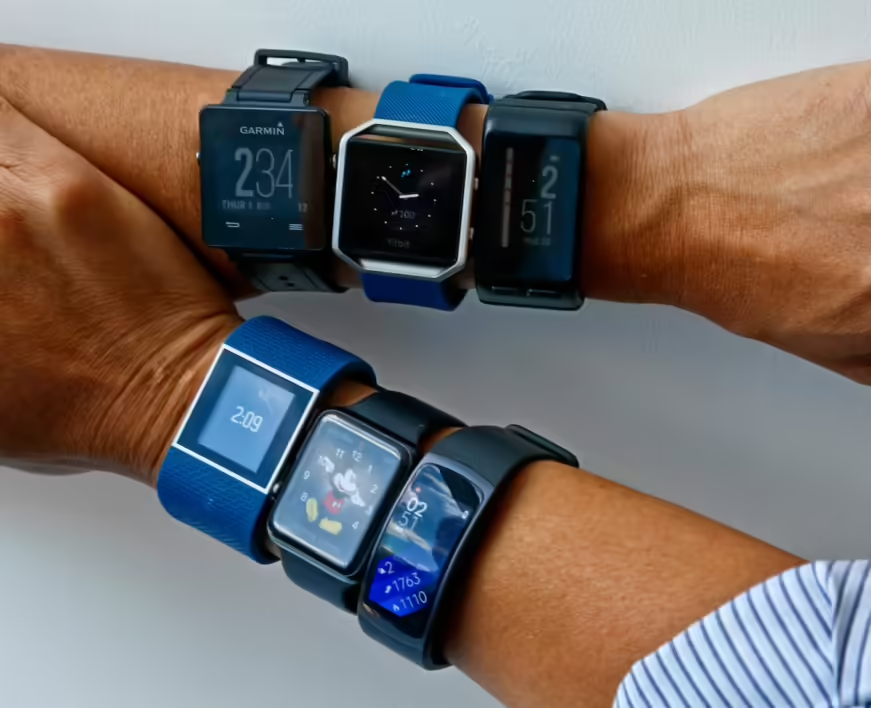As a seasoned athlete, I understand the critical role technology plays in enhancing performance. The evolution of athlete performance trackers has revolutionized the way we approach training and development. With advanced systems like WIMU, athletes can now access real-time data, vital GPS information, and in-depth insights to optimise their readiness and prevent injuries effectively.
These cutting-edge sports trackers generate a staggering 20,000 data points per second, offering over 250 variables for every athlete. The STATSports Apex Athlete Series stands out as a game-changer, providing 16 key metrics for unparalleled performance monitoring. By utilising such advanced technology, athletes can elevate their game to match that of professionals, all while ensuring optimal fitness and tactical development.

Using athlete performance trackers offers numerous advantages for enhancing my training and performance. These devices, like the mentioned WIMU and STATSports Apex Athlete Series, provide real-time insights and GPS data that play a crucial role in driving performance improvements. With the detailed information these trackers offer, I can optimise my readiness, reduce the risk of injuries, and closely monitor my progress. By leveraging the wealth of data they provide, athletes like me can elevate our game to compete at a professional level while focusing on improving fitness and tactical skills.
When considering an athlete performance tracker, certain key features are essential to ensure optimal functionality and usability. One crucial aspect is an intuitive design that simplifies navigation and usage, unlike the poorly designed button on some devices that can cause confusion. Additionally, seamless syncing to a smartphone or other devices is vital to access and analyse the collected data efficiently. The ability to accurately track metrics like speed, distance, and performance indicators is also a must-have feature to gauge improvements and set meaningful goals in training sessions.

When it comes to athlete performance tracking, wearable devices play a crucial role in providing essential data for monitoring and enhancing performance. These devices are lightweight and offer real-time insights into various metrics such as speed, distance covered, and even movement patterns during training or competitions. The accelerometer in these devices helps in capturing changes in force, while gyros provide orientation and direction data. Additionally, magnetometers support accelerometers by enhancing data orientation. Overall, wearable devices are reliable, affordable, and offer a wealth of information to improve training sessions and overall performance.

In the realm of athlete performance tracking, mobile apps have revolutionised how athletes monitor their progress and training routines. These apps offer a user-friendly interface for athletes to input their data, track their performance metrics, and analyse their progress over time. Athletes can easily sync their wearable devices with these apps to seamlessly transfer data for a comprehensive overview of their performance. Mobile apps also provide features for goal setting, performance analysis, and sharing achievements with coaches and teammates, making them a versatile tool for enhancing athletic performance.

Advanced monitoring systems have transformed athlete performance tracking by providing in-depth insights into various performance metrics. These systems offer a comprehensive approach to monitoring athletes’ readiness, preventing injuries, and optimising training programmes. Companies like WIMU and STATSports Apex Athlete Series have set the benchmark in the industry by offering cutting-edge technology that delivers accurate GPS information and detailed performance analytics. With advanced monitoring systems, coaches and athletes can make informed decisions based on real-time data to maximise performance potential and achieve competitive edge in sports.
When selecting an athlete performance tracker, I focus on evaluating my specific needs and goals. I consider the sports I participate in, the data I aim to track, and the insights I require to enhance my performance. By understanding my requirements, I can pinpoint the features and capabilities essential for achieving my athletic objectives efficiently.
In my quest for the perfect athlete performance tracker, I meticulously compare various brands and models available in the market. I delve into the specifications, functionalities, accuracy, and user reviews of each tracker to determine which one aligns best with my needs. By conducting a thorough comparison, I ensure that I invest in a tracker that not only meets but exceeds my expectations.
When using athlete performance trackers, I find it essential to establish a routine for daily monitoring. By consistently tracking key metrics such as heart rate variability, training load, and sleep patterns, I can gain valuable insights into my overall fitness and recovery levels. This daily monitoring helps me adjust my training intensity, volume, and rest periods to optimise performance and prevent overtraining.
For me, one of the most crucial aspects of using athlete performance trackers is the ability to analyse the gathered data effectively. By closely examining the performance metrics, including speed, distance covered, and acceleration patterns, I can identify strengths, weaknesses, and areas for improvement in my training regimen. This data-driven approach allows me to make informed decisions, set realistic goals, and tailor my workouts to enhance my athletic performance efficiently.